Landmark Films Of The 20th Century – 1900-1909
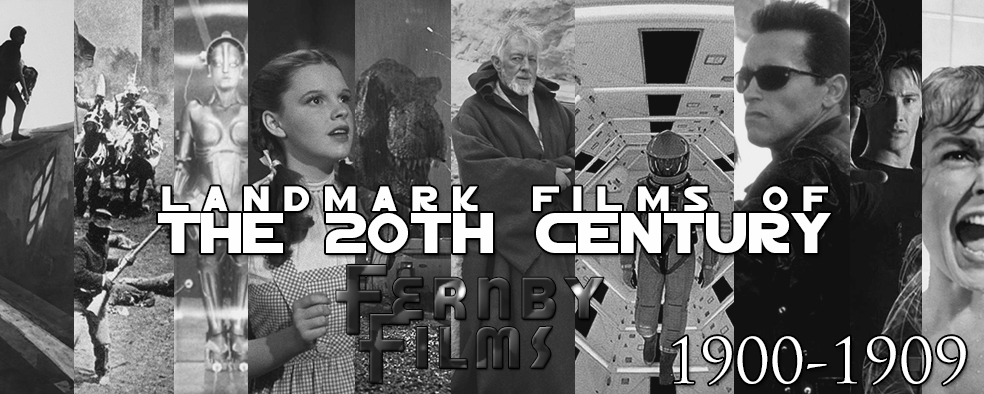
In this, the first of our ten-part series at landmark films of the 20th Century, we identify films that set new benchmarks and new ways for film-makers to tell their stories – from editing, to sound, to visual effects, the 100 films we’ve unearthed are considered either classics (or should be) that changed the landscape of film forever. The films listed herein represent annual landmark achievements in cinema – they may not be the “best” films of that year, but they represent a leap forward in cinematic technique that is worth considerable attention.
Think about it: the dawn of a new millennium, before cars and air-planes navigated the roads and skies, before television and internet and WiFi and digital streaming, and well before the word “celebrity” ever found its way into modern parlance, audiences flocked to the “flicks” to witness the burgeoning technology made famous by the Lumiere Brothers late in the 1800’s – film. Captured at roughly 24 frames per second – sometimes more, sometimes less – film was the big-ticket entertainment item of the 20th Century. As an industry, film would capture the imagination of the world and transport us to distant times and places via that conventional mechanism of cinematic technology.
Part I: 1900 – 1909
-
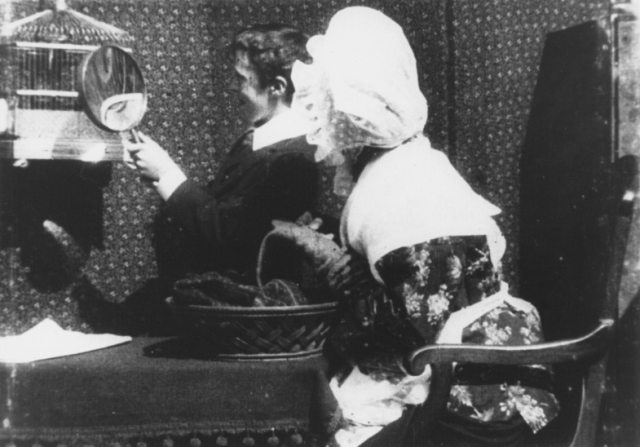
Grandma’s Reading Glass – 1900 1900 – Grandma’s Reading Glass.
Directed by cinema pioneer George Albert Smith, himself a stage performer of some repute, Grandma’s Reading Glass was a short film considered lost until its rediscovery in 1960. As short film, it lacks a narrative other than that of a young boy looking for things to magnify with his grandmothers reading glass. The short is notable as one of the earliest examples of a director using a “close-up”, that is moving the camera closer to an object to draw the audiences focus to that item, and although it’s an often rote film-making technique today, in 1900 this would have been a novelty worth checking out on the big screen. Accompanying a similarly themed film from Smith, also released in 1900, As Seen Through A Telescope, burgeoning film techniques were then considered experimental and had audiences spellbound.
2. 1901 – The Story of A Crime (aka Historie d’un crime)
A French film production noted for using two relatively new editing techniques – a dissolve to transition between scenes, and the use of flashbacks (to my knowledge the earliest use of such in a non-linear narrative sense). The film was directed by Ferdinand Zecca, who would produce hundreds of films for Pathé after helping French film producer Charles Pathe set up his pavilion at the 1900 Paris World’s Fair. Zecca is also a noted long-time editor for film icon Georges Melies.
1901 was also the first time a sitting US President, then William McKinley, had been both photographed and filmed extensively. A short newsreel film exists of McKinley at an event in Buffalo, New Jersey, filmed the day before he was assassinated.
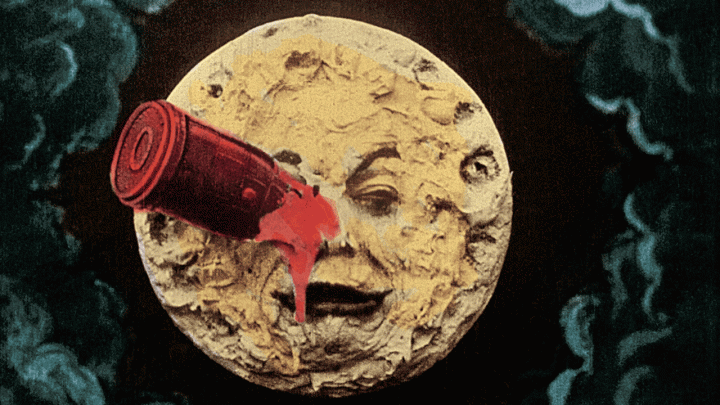
3. 1902 – La Voyage dans la Lune (Aka A Trip To The Moon)
Georges Melies’ seminal science fiction masterpiece is released in September of 1902, and among its most memorable sequences is a rocket flying to a faced moon, to land in the moon’s eye. It was Melies’ 400th film, and made extensive use of double exposures, trick photography, and other early visual effects.
4. 1903 – Life Of An American Fireman
Considered the earliest recognised work of a director cross-cutting between parallel narratives, Life Of An American Fireman contains 7 specific threads over 9 shots. It was directed by Edwin S Porter, who would also release The Great Train Robbery – possibly that year’s most successful film – which also used several of these techniques. There has been some controversy around the film, however, with the American Film Registry claiming that the edits made to the film occurred sometime after its 1903 début; I cannot confirm this as absolute corroborated fact, however. Still, it remains a film worth checking out as one of the earliest techniques used by cinema today.
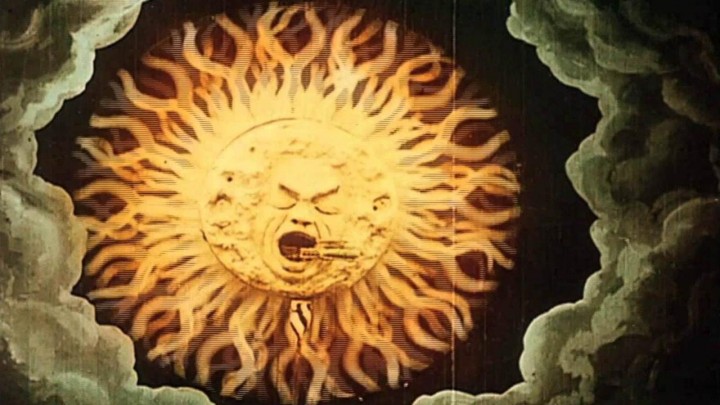
5. 1904 – The First US-based film distribution company + The Impossible Voyage
1904 is noted for a number of significant cinematic landmarks, notably the birth of what would become the film distribution industry in America, with Duquesne Amusement Supply Company running out of Pittsburgh, and the first ever official “remake”, of 1903’s The Great Train Robbery, which would be remade in America under the exact same name a year later.
However, the landmark film we’ve chosen for 1904 is Georges Melies’ The Impossible Voyage, which was considerably longer than most films of its day, at two reels, running a staggering twenty minutes. Made for a (then) huge sum of £37,000, The Impossible Voyage repeated Melies’ motifs from 1903’s A Trip To The Moon in that it told of an adventurer trying to get into the centre of the sun, trying to launch from some of Earth’s highest peaks (including the Swiss Alps’ Jungfrau). The critical and commercial reception to The Impossible Voyage was astounding; massively popular with audiences of the day, as well as with critics, The Impossible Voyage remains one of Melies’ most famous works.
6. 1905 – Rescued By Rover
Although animal-centric narrative films have become commonplace (and somewhat derivative) today, in 1905 they were an entirely new concept. A UK production entitled Rescued By Rover, directed by Cecil Hepworth, starred not only Hepworth’s family in almost all the roles, but the family dog, Blair, in the “lead” role (ha ha!). As the first animal film specifically telling a fictional narrative (rather than an outright documentary), Rescued By Rover became instantly popular and created the world’s first animal star – Blair. Rescued By Rover’s prints continued to wear out due to repetition in screenings, so much so that the film needed to continuously be reshot to create more prints, and the film is noted for being the first to use paid actors as part of the production.
Of note also, 1905 marked the début of the first Warner Brothers cinema (or nickelodeon, as it was known – with the entrance fee being a nickel, and “odeon” being Greek for theatre), in New Castle, Pennsylvania. Formed by the three brothers – Harry, Sam and Ablert – the cinema would be known as Cascade Movie Palace, and was the first foray into the cinema industry for a family now synonymous with it.
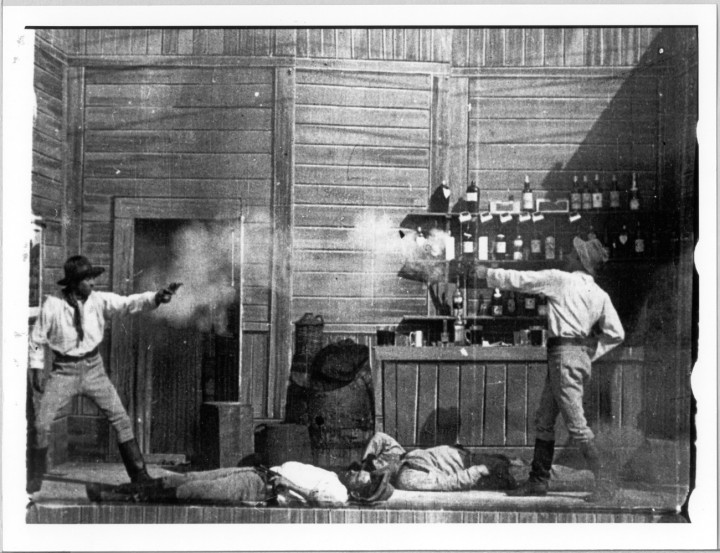
7. 1906 – The Story Of The Ned Kelly Gang
Australia made its mark in cinema history in 1906, with the world’s (then) longest film, a 70-minute epic about the exploits of Australia’s most famous bushranger, Ned Kelly. Featuring a star turn by actor Frank Mills, as Ned Kelly, and directed by George Tait, The Story of The Ned Kelly Gang debuted in Melbourne, Australia, in 1906, and would receive a début in England in 1908. As the longest narrative feature produced at that time, the film was incredibly popular. Today, much of the film is lost, save for around 17 minutes of reconstructed fragments of footage.
8. 1907 – La Enfante prodigue (aka The Prodigal Son)
Hot on the heels of Australia’s 70 minute film feat, France followed suit in 1907 with a 90 minute production of Michel Carre’s The Prodigal Son.
9. 1908 – A Visit To The Seaside
In 1908, in the UK, British filmmaker George Albert Smith shot a short film entitled A Visit To The Seaside. Although unremarkable as any kind of story film – it comprises people at the beach doing everyday things – the film is a landmark in cinema by being the first ever to be shot using a natural colour process, Kinemacolor, a precursor to Technicolor. Whereas previous “coloured” films required hand painting of each frame to achieve the desired effect, A Visit To The Seaside marked the first time a film had been shot in colour naturally. Kinemacolor used a two-tone colour process (the film depicts brilliant greens and reds) and became a sensation – it remains one of the most highly regarded technical innovations of early 20th Century cinematography.
Also in 1908, French film The Assassination Of The Duke of Guise, by duo Charles le Bargy and Calmettes, became the first film for which an original score was composed (by Camille Saint-Saens, no less), and an original screenplay by an “eminent man of letters”, Henri Lavedan.
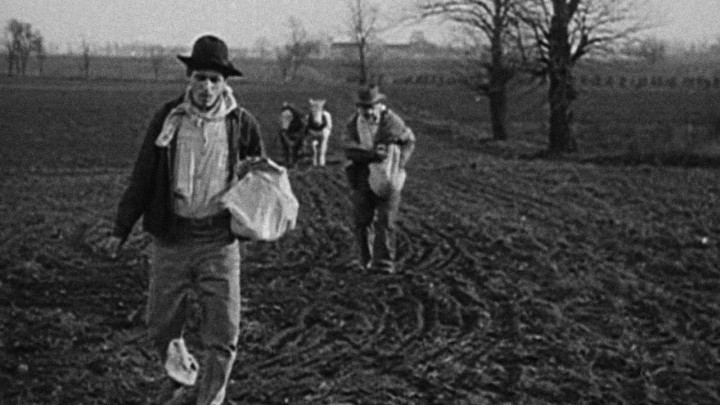
10. 1909 – A Corner in Wheat
Noted prolific American director DW Griffiths made A Corner In Wheat, a film in which we see the first ever use of a “freeze-frame” effect. Although not technically a frozen frame, but rather an extended tableau of actors remaining motionless to give the effect of a freeze, A Corner In Wheat also contained more cross-cutting between narratives – a concept still used sparingly, even in lengthy feature films of the time.
As the decade closed out, 1909 also saw the first feature length film produced in the US, Les Miserables, as well as four-perf 35mm film becoming the standard of the film industry. It has remained so to this day. 1909 also saw the first lawsuit brought against a film studio for copyright infringement, for a production of Ben Hur, ensuring that studios would subsequently have to purchase film rights to previously published works.

I'm the same as brikhaus, Voyage to the Moon was the only one I recognised. Excited to see more of this series.
Interesting article. I've only heard of one of these (Voyage to the Moon). I'm always interested in history, so I can't wait for your next installment in the series.
Thanks mate! It's been great researching some of these films (although I admit, the ones from about 1930 onwards are a little better known by folks!) and I'll have to get around to watching some of them myself.